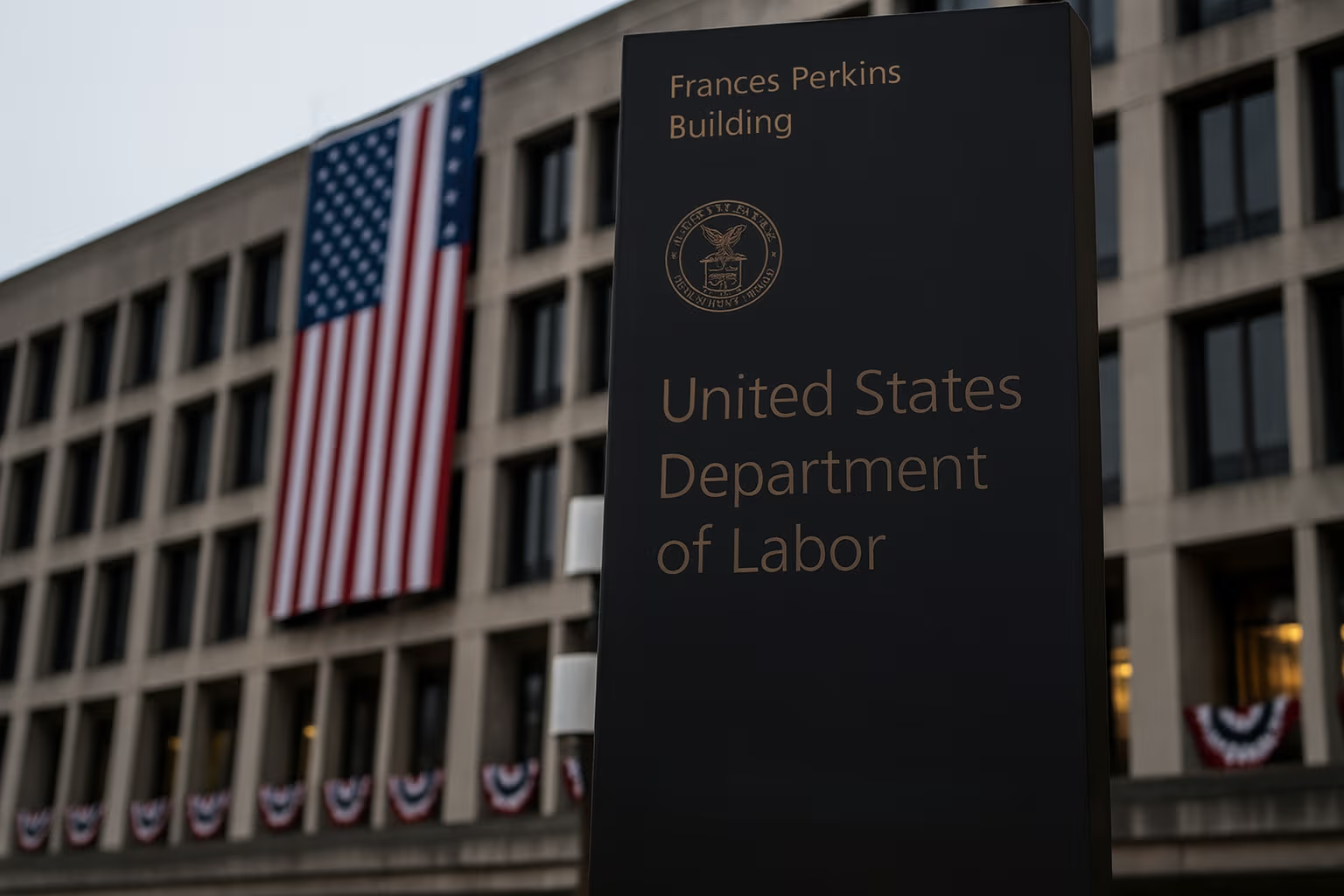More than 502k digital voices have been telling a story long before the government confirmed it, and now, with the October U.S. Jobs Report canceled after the shutdown, the silence from Washington is louder than any statistic. If the Food Crisis felt like a tremor, the Employment Crisis is the aftershock and the data shows that the real panic started months ago.
Across these digital conversations, employment insecurity has been one of the darkest emotional currents, with 72% of all mention sreading negative and only 10% positive. Layoffs and unemployment dominate the fear economy, registering a staggering 93% negative sentiment and an (NSI of –91).
Job security fears follow closely, carrying entrenched negativity (NSI –71), while topics like tariff impacts 65% negative and H1B policy shifts (NSI –55) compound the pressure.
Impact of AI/Automation on Jobs stood at (NSI -47) with overall negativity at 60%.
The canceled jobs report is not simply a bureaucratic delay. For millions of Americans, it removes the only official window into their economic stability. And when people lose a trusted signal, they turn to each other. What they said across Reddit, Twitter, YouTube, and other platforms paints a labor market far more tense than any 1 month federal report could show.
The shutdown silenced the jobs report, but workers were already shouting
Before Washington pulled the plug on October’s numbers, digital sentiment had already revealed a workforce leaning into fear. People are not waiting for the Department of Labor to tell them what they were seeing every day.
Negative sentiment around employment and job security reached 72%, and neutrality hovered at just 18% indicating there is little indifference left in the labor conversation.
A collective unease is evident, particularly in discussions around layoffs, automation, visa policy shifts, and broad economic instability.
On Reddit, Employment anxiety scores drifted toward the extreme negative (NSI –62).
On YouTube, sentiment plunged even further (NSI–69).
Twitter showed its own decline, marked by pessimistic narratives about job prospects and recession fears (NSI –50).
In the entire digital ecosystem, very few conversations carried optimism.
With the October Jobs Report canceled, this emotional landscape becomes even more important. It reflects how people truly feel when no official narrative is available.
Early indicators of crisis: who felt the employment shock first?

The earliest signs of the employment crisis emerged through demographic and sectoral cracks that widened as the months went on.
Millennials were the first to panic, with 67% negative sentiment and an (NSI –54). This group carries the most acute insecurity, shaped by student debt, recession trauma, and the long shadow of economic instability.
Gen X follows with an (NSI –51), Boomers show even sharper negativity with (NSI –67) indicating that fear is not confined to one age bracket but manifests differently across life stages.
Occupation specific sentiment further deepens this divide
Freelancers and skilled professionals show more than 60% negativity and an NSI surpassing –50, a clear indication that independent workers fear being the first expendable.
Founders and business owners also show sharp concern (NSI –46), revealing a leadership class bracing for reduced stability.
Government employees, however, remain buffered with a relatively mild NSI –16, creating one of the clearest contrasts across sectors
Job type demonstrates another profound split:
Grey-collar professionals, while smaller in number, carry 75% negative sentiment (NSI –63).
White Collar one of the largest cohorts sits at 57% negative (NSI –42).
Blue Collar workers show slightly softer negativity (NSI –32).
but all categories lean toward pessimism.
These early indicators reveal that anxiety was not triggered by the shutdown; the shutdown simply removed a layer of visibility on top of existing insecurity.
How Americans are coping: a workforce moving into protective mode
While 79% of workers express moderate to high concern about job security, what stands out is the decisive behavioral pivot. 70% of Americans are already adapting, shifting into defensive strategies long before official numbers could confirm a downturn.
The three most common responses are:
Building emergency savings more aggressively 51%
Actively job hunting 49%
Developing new skills or certifications 41%
These responses are not speculative. They are survival behaviors triggered by widespread uncertainty.
When asked about the source of insecurity, general economic uncertainty 23% and recession fears 24% were the leading triggers. Industry-wide layoffs, contract instability, and automation threats collectively shaped the rest of the fear landscape.
Age segmentation shows how different generations interpret risk:
Younger workers (18–28 and 29–44) cite automation, layoffs, and financial distress as top threats.
Older workers (45–60 and 61–79) show heightened concern about recession and economic downturns.
Despite diverse sources of fear, their behavioral responses remain nearly identical, further validating the universality of the employment anxiety cycle.
The income divide: a tale of two economies
The study reveals a sharp divergence between income groups:
Lower-income workers report the highest worry 55% very/high concern, (NSI–37).
Middle-income groups show improvement but remain pessimistic (NSI –24).
Upper-income workers, however, demonstrate far lower concern, with a surprising (NSI of +4), indicating slight optimism or at least reduced threat perception.
This illustrates a bifurcated labor landscape where economic shocks disproportionately impact those with least protection, and the absence of the jobs report only intensifies this imbalance.
Political divisions tell a similar story.
Democrats show the highest insecurity 54% high concern (NSI –36).
Republicans demonstrate substantially lower worry (NSI –12).
Other/Third Party respondents mirror Republican sentiment (NSI –11).
No matter the political stance, however, concern is present only its intensity varies.
When the jobs report goes dark, signals matter even more
With official labor data temporarily muted, the only real-time signals left come from web insights themselves. The U.S. workforce has been communicating its fears, behaviors, and expectations in millions of micro-interactions. The canceled report did not create panic; it simply removed the traditional filter that usually interprets the panic.
What emerges from these voices is a picture of a workforce standing in a fog with no federal lighthouse ahead.
How BioBrain detected the signal before the shock

BioBrain enters only when the picture is clear enough to interpret. Using a fusion of traditional techniques and digital-era intelligence, BioBrain’s proprietary research engine connected the dots across sentiment, behavior, and demographic patterns while the federal narrative drifted into silence.
The platform uses:
- Deep dives into digital audience segments from UGC Multi-dimensional cross-analysis of topics, occupations, demographics, and sentiment.
- The RRR Framework (Recency – Relevance – Resonance) to filter genuine human insight from synthetic noise, spam, or outdated chatter.
- Traditional research methodologies blended with real-time digital listening.
Through this approach, BioBrain identified early warning indicators such as:
- A surge in discussions around layoffs
- Spikes in automation fears
- Increased activity in emergency savings and job-seeking behavior
- Widening sentiment gaps between age segments
- Escalating tension among freelancers, skilled professionals, and founders
These signals showed up long before the October Jobs Report was expected long before the shutdown silenced it.
The future of research: seeing what traditional data cannot
The canceled jobs report highlights a broader truth. Traditional data sources are aging. They operate on monthly cycles while consumer anxieties evolve by the minute. As the world becomes more volatile, predictive intelligence replaces retrospective reporting.
The future belongs to research systems that can interpret emotional velocity, behavioral pivots, digital sentiment, and aggregated narrative flows. BioBrain’s engine is built for that future, enabling:
- Trend deep dives
- Consumer intent mapping
- Need-state exploration
- Category white space discovery
- Innovation pathway identification
Even when official data disappears, intelligence does not.
The crisis was not a surprise. The signals were always there & the next signals the ones, that shape the future of American work are already forming in the digital noise.











